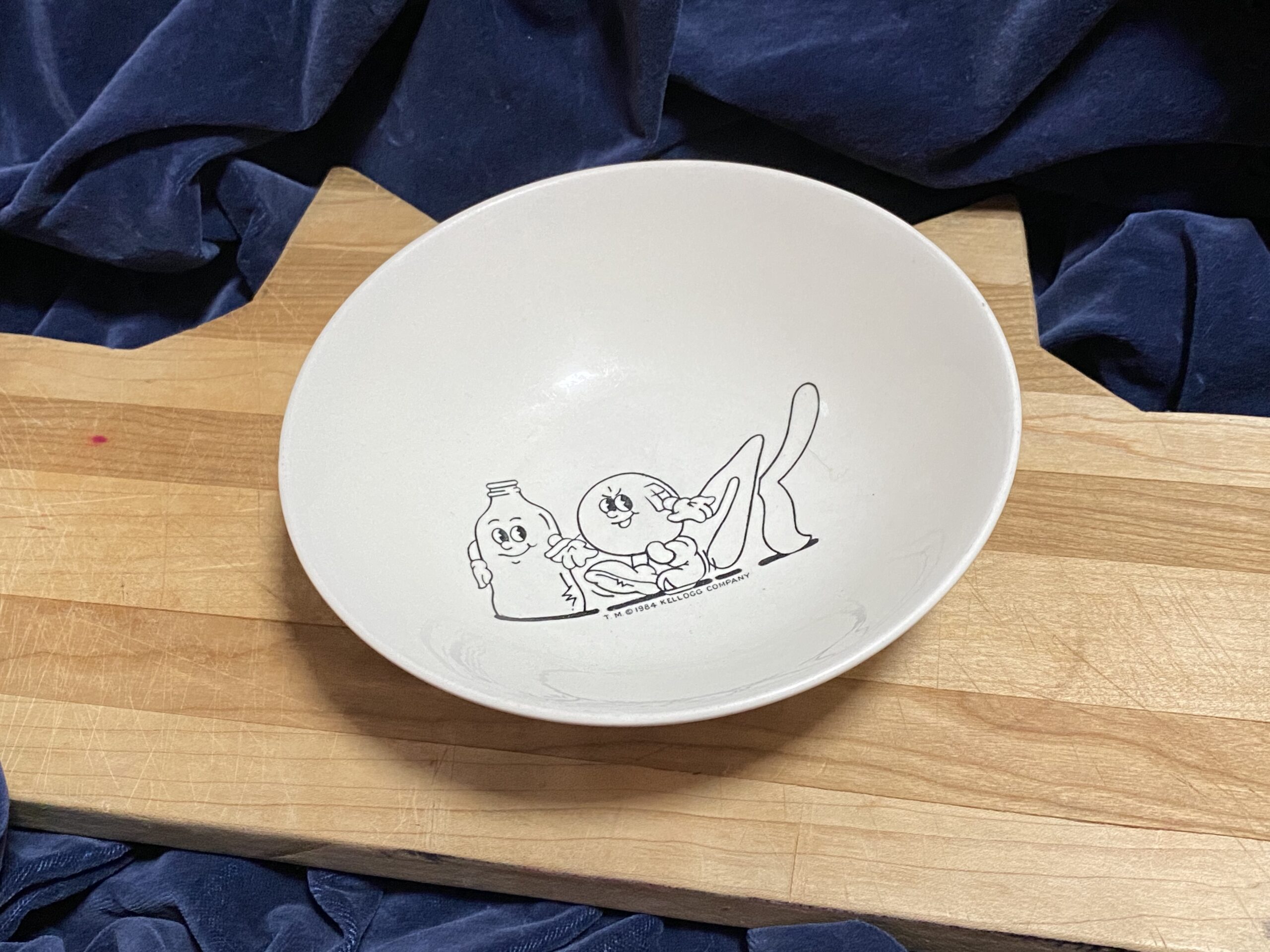Special K 1984 Cereal Bowl from the Kellogg Company: 33,500 ppm Lead on the food surface (90 ppm Lead & up is unsafe for kids.)
Full XRF test results for the Special K 1984 Cereal Bowl from the Kellogg Company, pictured here.
Note: Please avoid using any and all vintage – AND new – promotional ceramics for any food-use purposes. Vintage ones were not subject to any sort of regulation at all for total Lead content — nor even something like leach-testing to assess whether they were actively leaching that Lead. And new ones are still not regulated for total Lead content — as they tend to be exempt from federal regulations because they are legally considered mere “promotional items” (rather than actually intended for food-use). To read more about the concern for Lead in food-use ceramics, please click here.
#FunFact: This piece was shipped to me by a reader in New Zealand!
Reading #1) Center of food surface of dish over black design
60-second test
- Lead (Pb): 31,600 +/- 300 ppm
- Cadmium (Cd): non-detect
- Mercury (Hg): non-detect
- Bromine (Br): non-detect
- Chromium (Cr): 1,555 +/- 127 ppm
- Manganese (Mn): 549 +/- 75 ppm
- Iron (Fe): 3,332 +/- 86 ppm
- Cobalt (Co): 1,796 +/- 54 ppm
- Nickel (Ni): 569 +/- 34 ppm
- Copper (Cu): 85 +/- 13 ppm
- Zinc (Zn): 1,295 +/- 27 ppm
- Barium (Ba): 244 +/- 18 ppm
- Platinum (Pt): 177 +/- 40 ppm
- No other metals detected in consumer goods mode.
Reading #2) Center of food surface of dish – white only area
60-second test
- Lead (Pb): 33,500 +/- 300 ppm
- Cadmium (Cd): non-detect
- Mercury (Hg): non-detect
- Bromine (Br): non-detect
- Chromium (Cr): non-detect
- Iron (Fe): 1,286 +/- 58 ppm
- Copper (Cu): 75 +/- 12 ppm
- Zinc (Zn): 1,652 +/- 30 ppm
- Barium (Ba): 282 +/- 18 ppm
- Platinum (Pt): 210 +/- 39 ppm
- No other metals detected in consumer goods mode.
For those new to this website:
Tamara Rubin is a Federal-award-winning independent advocate for consumer goods safety and a documentary filmmaker. She is also a mother of Lead-poisoned children. Tamara’s sons were acutely Lead-poisoned in August of 2005. She began testing consumer goods for toxicants in 2009 and was the parent-advocate responsible for finding Lead in the popular fidget spinner toys in 2017. Tamara uses XRF testing (a scientific method used by the U.S. Consumer Product Safety Commission) to test consumer goods for toxicants (specifically heavy metals), including Lead, Cadmium, Mercury, Antimony and Arsenic. All test results reported on this website are science-based, accurate and replicable. Items are tested multiple times to confirm the test results for each component tested. Please click through to this link to learn more about the testing methodology used for the test results discussed and reported on this website.



Never Miss an Important Article Again!
Join our Email List







